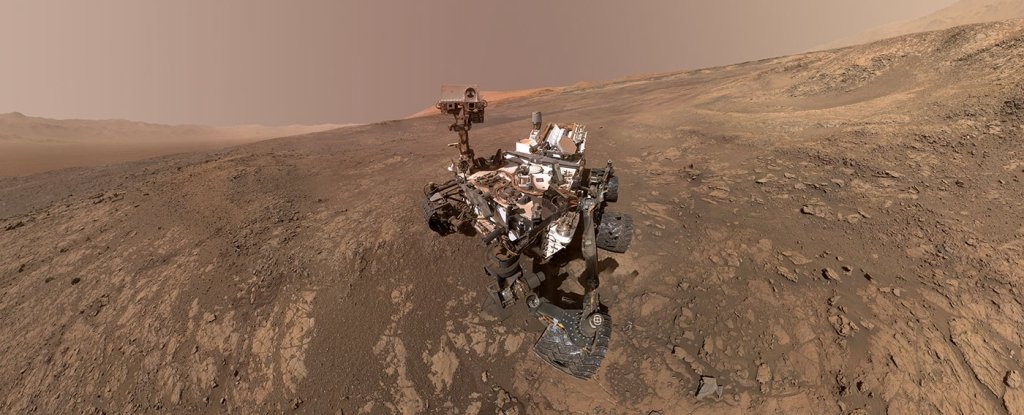Last week,
Curiosity made its strongest detection of methane on Mars yet. Its laser
spectrometer instrument registered a methane spike of 21 parts per billion by
volume (ppbv) in the Gale Crater, a region the rover has been exploring since
it landed in 2012.
Generally,
methane presence on Mars has a global average of 10 ppbv, so NASA is conducting
follow-up observations to see if it can find where the unusually high
concentration has come from.
What makes
this so interesting is our knowledge of methane sources: it can be produced by
living creatures. Hence, tracking down the source of methane on Mars could be a
way to find out if there are microbes living in the extreme conditions of the
Red Planet.
But it's way
too early to get excited, as microbes are certainly not the only potential
source.
"With
our current measurements, we have no way of telling if the methane source is
biology or geology, or even ancient or modern," said Mars scientist Paul
Mahaffy of NASA's Goddard Spaceflight Center.
Curiosity
and other instruments have made a few methane detections over the years, but
levels seem to rise and fall, and methane seems to appear and disappear again
like a mischievous ghost.
It wasn't
until earlier this year that scientists realised two independent instruments
had detected the same puff of methane in 2013. Tracking down where it's coming
from, and what's creating it, is proving quite tricky.
And there
are reasons to be cautious about jumping to any major conclusions. Here on
Earth, we have a fair amount of methane - about 1,800 ppbv in the atmosphere as
of 2011, of which 90 to 95 percent is generated by living or deceased
creatures.
But when we
look elsewhere in the Solar System, there are also plenty of geological
processes that can generate methane abiotically, without the presence of life.
On gas and ice giants such as Jupiter, Saturn, Uranus and Neptune, plenty of
methane has emerged via chemical reactions.
Pluto has
methane ice. Saturn's moon Titan has lakes of liquid methane. The compound
isn't exactly rare in the Solar System, yet as far as we know, only Earth's is
a product of biological processes.
There's
another spanner in the works. The European Space Agency's ExoMars Trace Gas
Orbiter, with the ability to detect 50 parts of methane per trillion by volume
in the Martian atmosphere, has been collecting data for a little over a year,
and has so far come up completely empty handed.
So whatever
methane there is on Mars could only exist very briefly on the surface before
dissipating into the atmosphere.
The
observations currently underway will help figure out more about this detection.
Whatever they find - whether Curiosity does or does not detect the methane
again - scientists at NASA will have more context to determine if the gas was
transient, or local to the Gale Crater.
They've also
been in contact with the Trace Gas Orbiter team at the ESA to see if an
atmospheric detection was made at the same time. This could help locate the
source of the gas, and calculate how long it lasts in the atmosphere.
Whether the
source of the methane is biological or not, figuring out where it comes from
will teach us something new about Mars. Keep watching this space.

Comments
Post a Comment